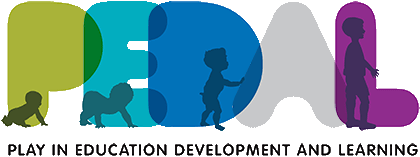What are executive functions?
Children who can pay attention and ignore distraction around them, remember instructions and directions, and flexibly adjust to different situations are in a better position to learn compared to their more distracted peers. The skill set that children use here is called executive functions. This skill set is thought to be important for how well children settle into school, and their ability to work and play – both on their own and with other children or adults.
Even though parents and caregivers usually do not use the term executive functions, they know the associated behaviours well. Teachers in particular might notice if children struggle with these skills. When children are finding executive functions tricky, they might shout out in class, show difficulties working towards a set goal (either forgetting the instructions or becoming distracted along the way) and be impulsive when interacting with classmates or adults.
Typically, we rely on our executive functions when we are not working on autopilot but instead have to slow down and think before showing a response. Tasks and activities involving our executive functions require us to adapt flexibly to new situations. At the same time, they should be challenging. That means, they are not too easy and not too hard. If these activities or games are fun and enjoyable, then we are in an even better position to use our executive functions because stress and anxiety can hinder the use of these skills.
Executive functions are used in many quick and fun games and songs. My goal in this blog post is to describe some well-known games and songs for young children that require few resources and materials. I also want to show how these games can be tweaked so that they tax executive functions just a little bit more. Have a try!
Game ideas:
- Freeze games: Children are dancing around while music is playing. As soon as the music stops children “freeze” and are not allowed to move anymore. This fun game requires children’s inhibitory control because children have to stop their movement and stand still instead. Executive function demands can be added by asking children to freeze in specific body positions (e.g. stand on one leg). Children then need to keep this position in mind while also inhibiting the urge to keep moving. These body positions can be changed as you wish.
- ‘Simon says’ games: Children follow a specific command if the sentence was started with ‘Simon says…’ (e.g. ‘Simon says touch your nose’ then children touch their nose). If the sentence was not started with ‘Simon says…’ children should not follow the direction (i.e. refrain from touching their nose). Children need to inhibit the automatic response to do what they were told and stay in their initial position instead. Directions can become more and more silly or challenging to increase the fun!
- Head, Shoulders, Knees and Toes: This is a well-known children’s song which includes actions as children are singing along. When repeating verses, words are gradually omitted, and the body parts are touched without saying the actual word. Hence, children have to hold back from singing along and only touch their body parts quietly instead. This song-based game could be enhanced in difficulty by changing the rules. In an adapted version, children might be told to touch their toes if they are told to touch their head. That means children learn a new connection of rules. This mismatch of the content of the song and children’s behaviour requires children to overcome an automated response and show an adapted response instead.
- Concentration now begins…: This game works well with a small group. Children and adults sit in a circle and clap in a specific rhythm (both hands on thighs, clap, left click, right click). After children learned the rhythm, say: ‘Concentration, elimination, Keep the rhythm, Keep the rhythm to the beat. Subject?’. Then start with a category of your choice (e.g. animals, plants, colours, foods). While the group claps the rhythm, players have to say a word of the category on the clap. The rule is to not repeat words. This game requires players to keep the words that other players said in mind. Players have to also be flexible in their choice of words, as another player might say the word they were planning to say and so suddenly they have to come up with a new word. This game is fun and challenging – try it out!
- I went to the shops…: In this game one child starts off by saying “Today, I went to the shops and bought…candy”. The next child then repeats what the previous child said and adds another item e.g. “Today, I went to the shops and bought candy and a football”. This game taxes children’s working memory because it requires children to remember previously named words while thinking of new ones to add to the shopping list. The game can be made more difficult by asking children to follow the alphabet (e.g. first word with an A, second word with a B, and so on). Another change of rules could be that all words have to start with a specific letter (e.g. ‘H’) or be of a specific category (e.g. only foods). There are no limits to setting and changing rules. Older children could alternate between green and red foods. This would enhance the working memory load as children have to remember for which category children gave a word (e.g. red food) and consequently for what category they have to find a word next (e.g. green food).
The trick is to be creative with integrating changes of rules or having other players to join which makes the games more fun and challenging as responses need to be adjusted to the other players responses. The games typically require children to pay close attention.
Hopefully, this blog post gave you some inspiration and you will now give the games a go!

Useful links
You can find out more about executive functions and play using the resources linked below.
- The EasyPeasy app has lots of fun ideas for games to try with 0-5 year olds
- The Centre on the Developing Child at Harvard University provides this guide with activity ideas for children from 6 months to 12 years+
- Stop, Think, Act: Integrating Self-Regulation in the Early Childhood Classroom (McClelland & Tominey, 2016)

